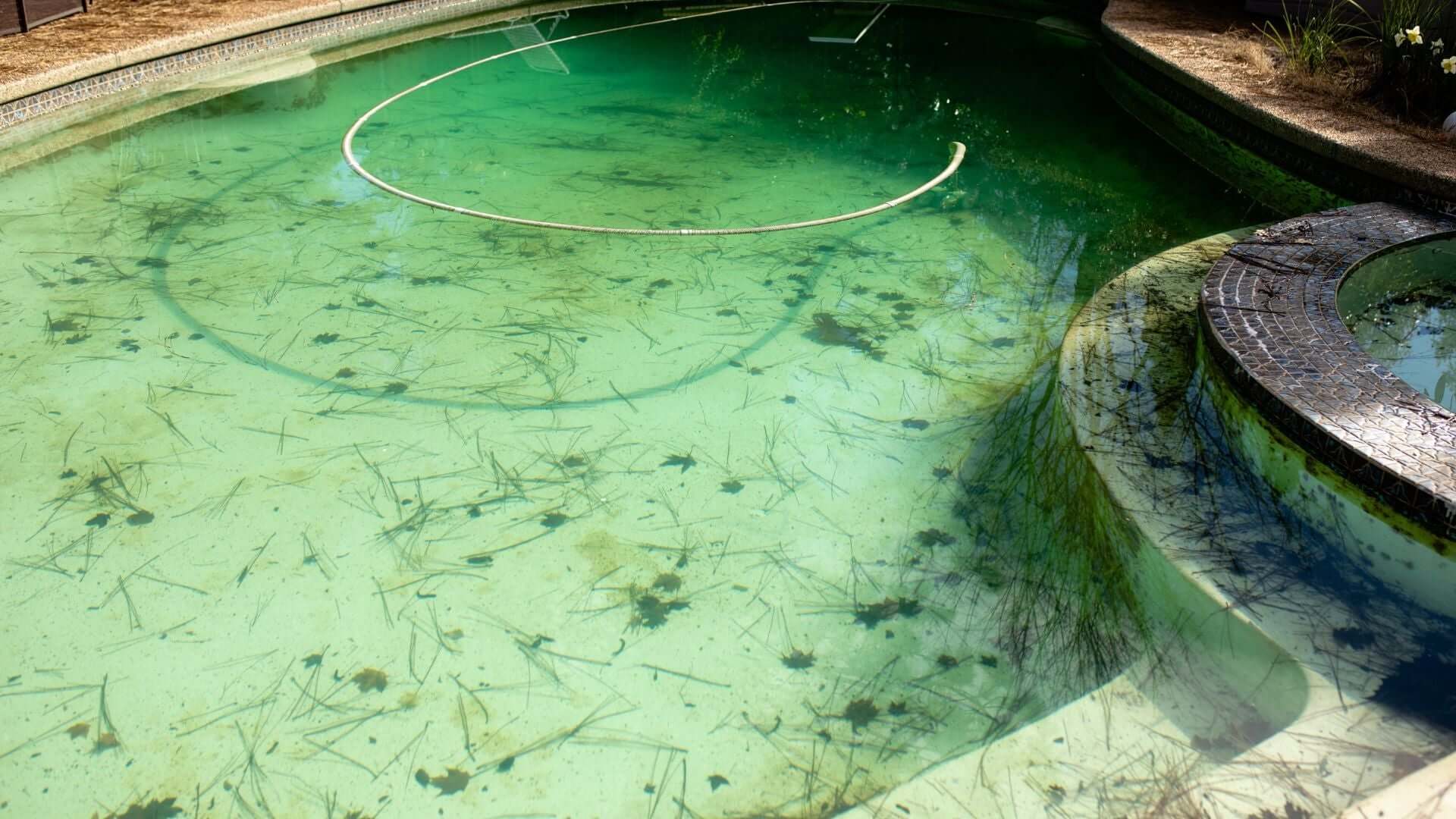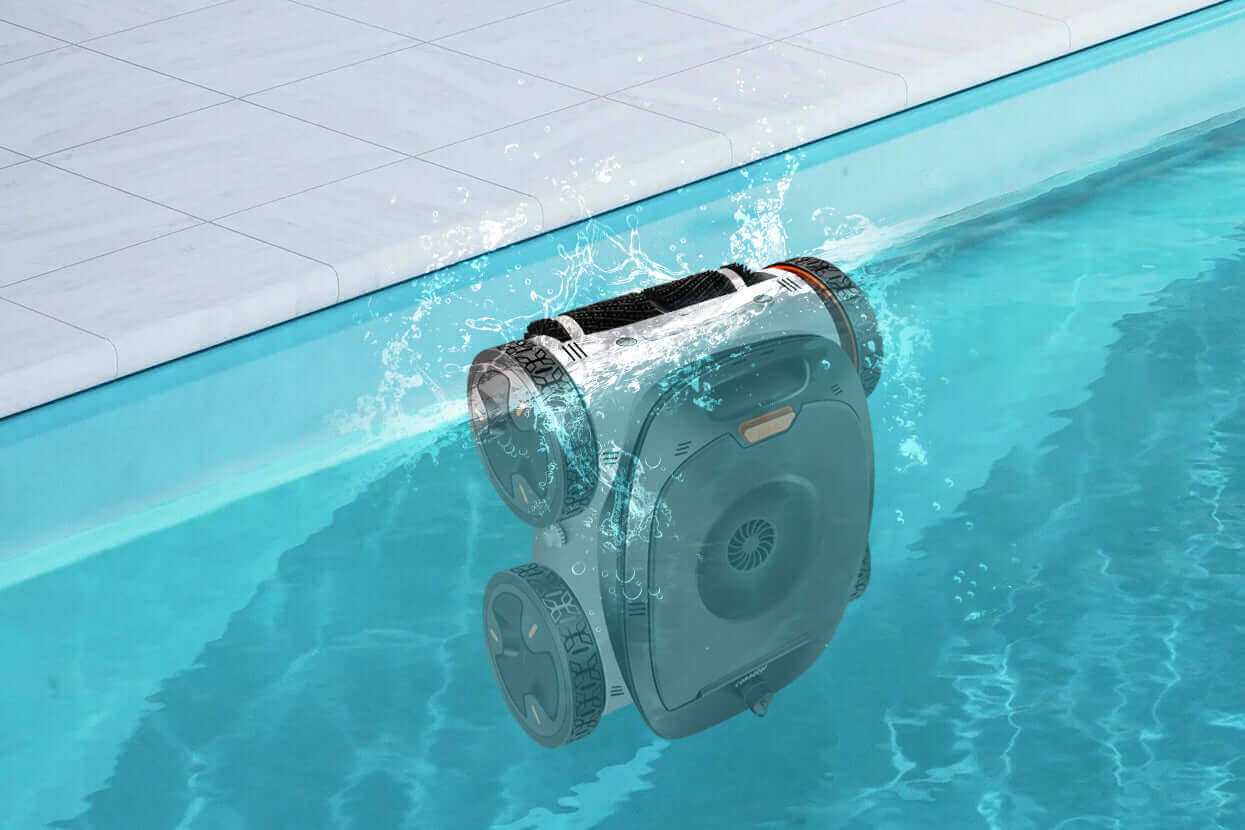Have you ever pulled back your pool cover, excited for that first swim of the season, only to discover a murky green science experiment instead of sparkling blue water? Or perhaps you've noticed slimy patches creeping along your pool walls, turning your aquatic paradise into something that belongs in a swamp documentary. What exactly causes these unwelcome green invaders, and how can you keep them from crashing your pool parties?
As pool owners, we invest significant time and money into creating our backyard oasis. The last thing we want is to battle constantly with algae and moss that transform our crystal-clear waters into a murky mess. Let's dive into understanding these green troublemakers and discover how to keep them far away from your swimming sanctuary.
Understanding the Green Invaders: Moss vs. Algae
First, let's clear up a common misconception. While many pool owners use the terms "moss" and "algae" interchangeably, they're actually quite different organisms with different prevention strategies.
Algae: The Underwater Opportunist
Algae are simple, plant-like organisms that thrive in water environments. They're essentially tiny aquatic plants that can multiply at astonishing speeds under the right conditions. As Serapool Porcelain explains, "Those living in water are called algae and those living on land are called mosses."
There are several common types of pool algae:
- Green algae: The most common type, appearing as green cloudy water or slippery surfaces
- Black algae: Stubborn, root-forming colonies that appear as dark spots on pool surfaces
- Yellow/mustard algae: Powdery deposits that resemble dirt or sand, often in shaded areas
- Pink "algae": Actually bacteria, not true algae, appearing as pink slime in corners
Moss: The Poolside Squatter
True moss is less common in swimming pools but may appear around pool decks, in crevices, or in consistently damp areas surrounding your pool. Moss has a more complex structure than algae, with tiny leaf-like parts, and prefers to grow on solid surfaces rather than in water.
Unlike typical plants, mosses lack standard roots, stems and leaves. Instead, they "grow in velvety soft layers or dense clumps" and contain chlorophyll, appearing as "flowerless spore plants" that can be "filamentous, leafy, ribbon-like or tubular" in shape.
Why Prevention Matters: The High Cost of Green Invaders
Before we jump into prevention strategies, let's understand why keeping these organisms at bay is so important:
Safety Concerns
Both algae and moss create slippery surfaces that increase the risk of falls and injuries. Additionally, algae-infested water can harbor harmful bacteria that pose health risks to swimmers.
Equipment Damage
Algae can "cause your filter to become overwhelmed and clogged" which "worsens water quality and circulation, encouraging even more algae growth." This puts extra strain on your pool equipment, potentially leading to costly repairs or replacements.
Chemical Imbalance
Fighting an established algae bloom requires substantial amounts of chemicals, disrupting your pool's carefully balanced chemistry and potentially causing other issues.
Maintenance Headaches
Once algae or moss gains a foothold, removal becomes much more difficult and time-consuming than prevention would have been.
Aesthetic Impact
Let's be honest – a green, murky pool just isn't inviting. Your gorgeous backyard centerpiece becomes an eyesore instead of a highlight.
The Prevention Playbook: Your 7-Step Strategy
Now that we understand what we're up against, let's explore a comprehensive prevention strategy that will keep your pool sparkling clean and invader-free.
1. Maintain Proper Water Chemistry
The foundation of algae prevention is proper water chemistry. As experts emphasize, "When it comes to pool care, prevention is better than tackling a problem once it's occurred. It is easier to prevent algae growth in your pool than it is to eradicate a more serious problem."
Test your water regularly (at least weekly during swimming season) and maintain these optimal levels:
- Chlorine: 1-3 ppm (parts per million)
- pH: 7.2-7.6
- Alkalinity: 80-120 ppm
- Calcium hardness: 200-400 ppm
- Cyanuric acid (stabilizer): 30-50 ppm
Pro tip: Invest in a reliable digital testing kit rather than relying solely on test strips for more accurate readings.
2. Optimize Circulation and Filtration
Poor circulation creates stagnant areas where algae thrive. "Without proper circulation, water can become stagnant, and algae like it when they can settle in, so it's important to keep your water moving, maintaining good circulation and flow."
Here's how to ensure your water keeps moving:
- Run your pump enough hours: During warm months, run your pump at least 8-12 hours daily.
- Position return jets strategically: Aim them to create a circular flow pattern that eliminates dead spots.
- Use a Xbenbot Hydro-Puls Robotic Pool Cleaner: Our advanced robotic cleaner helps maintain circulation while removing debris that could feed algae.
- Clean your filter regularly: "If your pool filter becomes too clogged with dirt, it will do a poor job of removing new instances of dirt and debris, giving algae another reason to stick around. Backwashing your filter will help remove waste so it can continue functioning at its best."
3. Shock Your Pool Regularly
Even with proper chlorine levels, regular shocking (super-chlorination) helps eliminate contaminants before they can support algae growth.
Pool maintenance experts recommend you "shock your pool water weekly to remove contaminants and clear up cloudy water." This practice is especially important:
- After heavy rain
- Following intensive pool use (like a pool party)
- During periods of extreme heat
- When opening your pool for the season
The Xbenbot Hydro-Puls helps distribute shock treatment evenly throughout your pool, ensuring maximum effectiveness against potential algae growth.
4. Brush and Vacuum Regularly
Physical cleaning is a critical, yet often overlooked aspect of prevention. Make sure to "brush the pool surfaces (walls, floors and steps) weekly to remove algae that may be building up."
Pay special attention to:
- Corners and crevices
- Behind ladders and steps
- Around skimmer baskets
- Areas with poor circulation
The Xbenbot Hydro-Puls features specialized brushes designed to scrub surfaces that are prone to algae growth, making this maintenance task effortless and thorough.
5. Use Preventative Algaecides
While proper chlorination is your first line of defense, a maintenance dose of algaecide provides additional protection. Experts recommend you "add a preventative dose of an algaecide to your pool every week after shocking. Algaecides not only kill algae—they can prevent its growth as well."
Different types of algaecides target different algae varieties:
- Quaternary ammonium compounds for green and yellow algae
- Polymer-based algaecides for a broader spectrum
- Copper-based algaecides for stubborn algae problems
6. Reduce Nutrient Sources
Algae, like all plants, need nutrients to grow. Reducing these nutrient sources can significantly hamper algae's ability to establish itself.
Phosphates, which enter pools through "dust, leaves, debris, and swimmer waste like sweat and body oils, act as fertilizer for algae." Removing these nutrients "can greatly hinder algae growth before it ever begins."
These steps help reduce nutrient levels:
- Keep your pool clean from debris with the Xbenbot Hydro-Puls
- Shower before swimming to remove oils, cosmetics, and lotions
- Use phosphate removers if testing shows high phosphate levels
- Keep pets out of the pool (their fur and dander contribute nutrients)
7. Prevent Cross-Contamination
Algae can enter your pool via "contaminated ocean swimwear" or "contaminated pool cleaning equipment." This silent invasion brings algae spores directly into your controlled environment.
To prevent this cross-contamination:
- "Clean all toys and swimwear that have been in natural bodies of water before allowing them into the pool to prevent the transfer of algae."
- Rinse pool maintenance equipment if it's been used in other pools
- Don't share pool cleaning tools with neighbors unless thoroughly disinfected
Moss-Specific Prevention Strategies
While most prevention strategies focus on algae, here are specific tactics for preventing moss around your pool area:
Reduce Shade and Moisture
Trim overhanging vegetation that creates shady, damp areas where moss thrives. Ensure proper drainage around your pool deck to prevent water accumulation.
Adjust pH of Surrounding Areas
Moss prefers acidic environments. For pool decks and surrounding areas, occasional application of a diluted baking soda solution can raise pH levels, making the environment less hospitable to moss.
Regular Cleaning of Pool Surroundings
Clean pool decks, coping stones, and other surrounding areas regularly with appropriate cleaners to remove moss before it can establish and spread.
Seasonal Prevention Tips
Spring Opening
- Clean thoroughly before refilling
- Balance chemicals immediately after filling
- Apply preventative algaecide early
Summer Maintenance
- Increase testing frequency during peak heat
- Adjust pump run times to accommodate higher temperatures
- Consider supplemental sanitizers during extreme heat
Fall Preparation
- Clean thoroughly before covering
- Apply winterizing algaecide
- Ensure proper cover fit to prevent debris entry
Winter Protection
Even in winter, "algae can still take hold of your water." Add appropriate algae preventatives before closing, as this will not only "keep your pool clean and algae-free all winter long, but it will help you have a quick and easy opening when the warm weather returns."
The Xbenbot Advantage: Prevention Made Easy
Let's face it – pool maintenance takes time and effort. That's where the Xbenbot Hydro-Puls Robotic Pool Cleaner shines as your ultimate prevention partner.
The Hydro-Puls doesn't just clean – it actively prevents algae and moss growth by:
- Continuous Circulation: As it moves through your pool, it creates additional water movement that discourages algae settlement.
- Thorough Scrubbing: Its advanced brush system removes invisible algae spores before they can establish colonies.
- Debris Removal: By eliminating organic matter that feeds algae, it cuts off the nutrient supply.
- Efficient Filtration: Its built-in filtration system captures particles as small as 2 microns, including many algae spores.
Unlike basic pool cleaners, the Hydro-Puls is designed with algae prevention as a core function, making it an investment in prevention rather than just cleaning.
When to Call the Professionals
Despite your best prevention efforts, sometimes professional help is needed, especially if:
- You've had recurring algae problems despite following prevention protocols
- Your pool has structural issues contributing to algae growth
- You're opening a pool that was neglected for an extended period
- You've tried multiple treatment approaches without success
Professional pool services can provide specialized treatments, equipment cleaning, and system analysis to address persistent problems.
The Crystal Clear Conclusion
Preventing algae and moss in your swimming pool isn't just about aesthetics – it's about protecting your investment, ensuring safety, and saving yourself time and frustration. With proper water chemistry, regular maintenance, and the assistance of your Xbenbot Hydro-Puls, you can enjoy a crystal-clear pool all season long.
As pool experts note, "With today's technology, there's really no reason anyone should be having problems with algae in the first place." By implementing these prevention strategies and leveraging modern tools like the Xbenbot Hydro-Puls, you can break the cycle of fighting algae and get back to enjoying your swimming pool the way it was meant to be – clean, clear, and inviting.
Remember, in pool maintenance, an ounce of prevention is worth a gallon of algaecide! Keep up with routine care, trust your Xbenbot to handle the heavy lifting, and get ready for a season of worry-free swimming in your pristine pool paradise.




Leave a comment
This site is protected by hCaptcha and the hCaptcha Privacy Policy and Terms of Service apply.